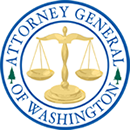Billing for Services Not Performed
This is one of the largest areas of Medicaid provider fraud. A provider tries to bill Medicaid for a treatment, or procedure, or service, which was not actually performed. Examples would be billing for blood tests when no samples were drawn; billing for x-rays when none were taken; billing for a dental filling when one was not done; billing for home health care hours when they were not provided.
Double Billing
A provider attempts to bill Medicaid and either a private insurance company or the patient for the same treatment. Or two providers try to get paid for services rendered to the same patient for the same procedure on the same date.
Substitution of Generic Drugs
A pharmacy might try to bill an insurance carrier or the patient for the cost of a name brand prescription when in fact a generic substitute was supplied at a substantially lower cost.
Unnecessary Services
A provider might misrepresent the diagnosis and symptoms on a patient’s records and billing invoices to obtain payment for unnecessary lab tests.
Kickbacks
A provider may conspire with another provider to give a kickback, either money, gifts, or products, when they receive a referral from the other provider or use the other providers products or services. For example, if a laboratory company that does blood testing offers to pay a doctor $20 for every patient that doctor sends to that laboratory, then both the laboratory company and the doctor have engaged in an illegal kickback scheme. Paying the doctor for referral of business encourages unnecessary testing and therefore unnecessary billing.
Cost Reports
A provider may include inappropriate expenses in claims made to Medicaid. These expenses often include the costs of items for personal consumption and use. For example, nursing home providers submit annual reports to the Medicaid program explaining how much it costs to take care of a nursing home resident. Only those costs that are related for resident care are allowable. Some providers fraudulently include personal costs, such as the remodeling of their own home, in the nursing home cost report and falsely describe it as work done at the nursing facility. The provider then submits a bill for an inflated rate for resident care based upon this false information.
Upcoding
When a provider exaggerates the level of service performed then that is referred to as upcoding. For instance, if a patient sees a doctor for ten minutes on a simple matter such as a cold and the doctor then submits a bill for an hour-long complex visit, that doctor has upcoded. It is improper for a doctor to falsely "upcode" the level of service from a short, simple visit to one of greater length designed for analyzing a much more complicated medical matter, when that is not what happened.
Unbundling
Unbundling occurs when a provider breaks one medical event into its component parts. For example, a dentist unbundles a tooth extraction when the dentist charges for pulling the tooth and the next week charges for an office visit to see how the patient is doing. The office visit is actually part of the bundle of services involved in a tooth extraction. The dentist cannot bill for those events separately.
Identity Theft/Use of Provider Numbers
Identity theft occurs when criminals steal information from providers and patients and use it to bill the Medicaid program for health care services or goods that were not provided. Some beneficiaries may sell their Medicaid number to others who submit bills for health goods and services that were not provided.

 Other Languages
Other Languages